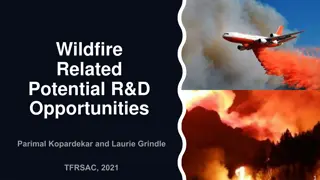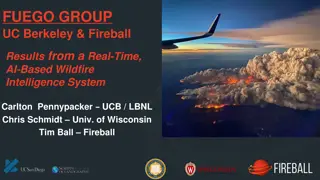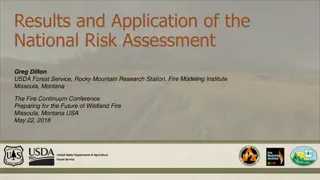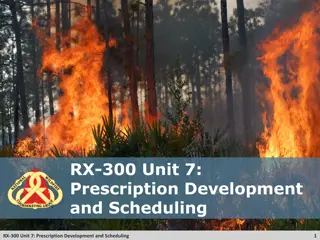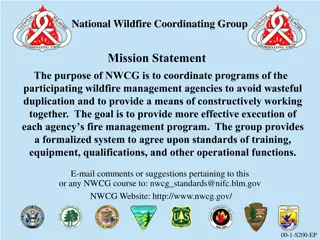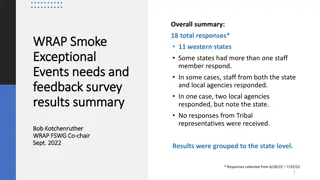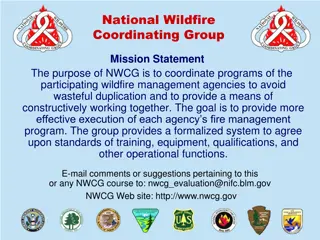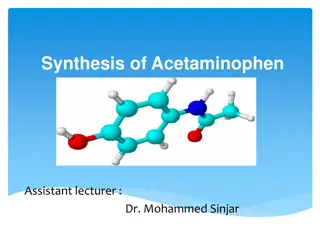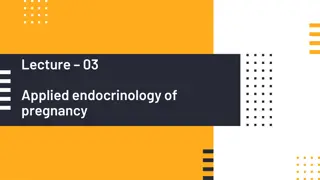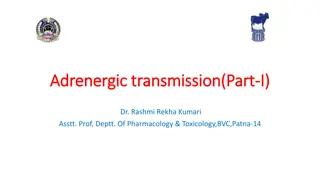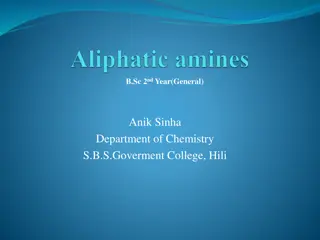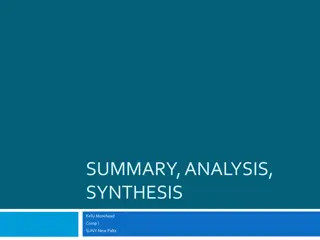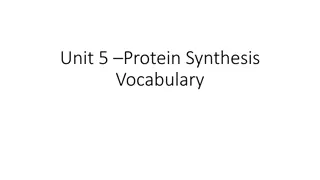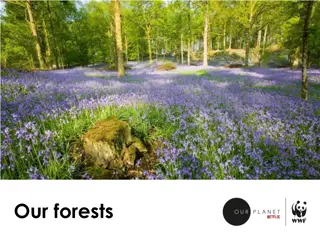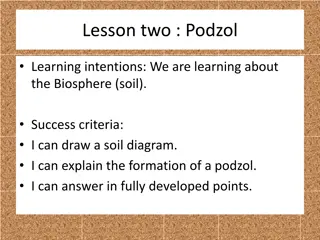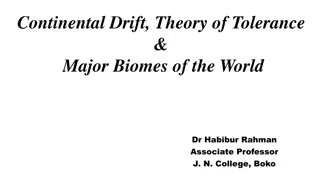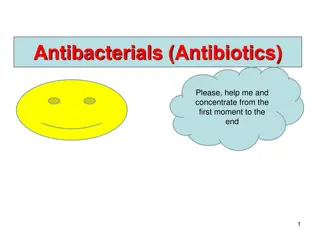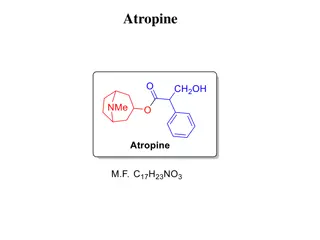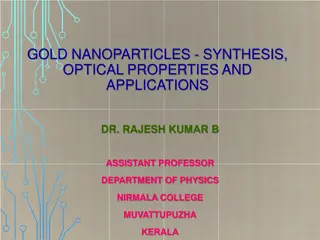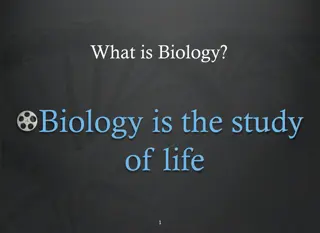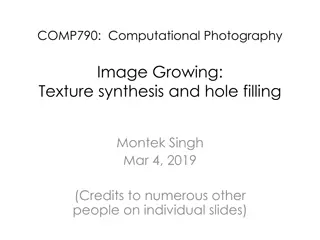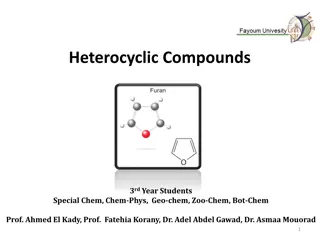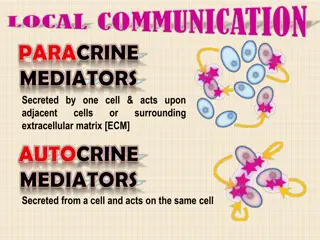Boreal Wildfire Effects and Research Synthesis
The thematic breakout report focuses on the impacts of fire and insect disturbances on the environment, with projects studying wildfires in boreal regions and their effects on ecosystems. Various studies funded by agencies like NASA and ERC aim to understand wildfire vulnerability, resiliency, and climate interactions. Current efforts include data collection for tundra-fire related research, with plans for burn severity paper submission. The collaborative work of researchers and experts sheds light on the future implications of these disturbances on the environment.
- Boreal Wildfire
- Ecosystem Resiliency
- Climate Interactions
- Data Collection
- Environmental Conservation
Download Presentation

Please find below an Image/Link to download the presentation.
The content on the website is provided AS IS for your information and personal use only. It may not be sold, licensed, or shared on other websites without obtaining consent from the author. Download presentation by click this link. If you encounter any issues during the download, it is possible that the publisher has removed the file from their server.
E N D
Presentation Transcript
Fire and Insect Disturbance Thematic breakout report Lead: Nancy French Allison Baer - Rapporteur
Breakout attendees Adrian Rocha Dong (Tony) Chen Allison Baer Sander Veraverbeke Randi Jandt Zav Grabinski Alison York Jordan A. Caraballo-Vega Angela Erb Nancy French Lisa Saperstein Megan Johnson Stefano Potter Laura Duncanson Liz Hoy Rebecca Scholten Jim Lawler Thomas D. Hessilt
PI Project Title Funding Agency Planning and Collection of Data on Boreal Wildfire Effects: Studies of broad-scale 2014 Wildfires in NWT, Canada Understanding the Vulnerability and Resiliency of Boreal-Taiga Ecosystems to Wildfire in a Changing Climate: A study of the 2014 Northwest Territories Wildfires Understanding the Interactions between Wildfire Disturbance, Landscape Hydrology and Post-Fire Recovery in Boreal-Taiga Ecosystems Bourgeau-Chavez (RRNES 2015) NASA Bourgeau-Chavez (TE 2014) NASA Bourgeau-Chavez (TE 2018) NASA Loboda (TE 2012) Long-Term Multi-Sensor Record of Fire Disturbances in High Northern Latitudes Quantifying long-term impacts of single and repeated wildfire burning in North American tundra on organic soil carbon stocks and ecosystem functioning Assessing impact of climate-driven increase in wildfire emissions on air quality and health of urban and indigenous populations in Alaska Increasing fire severity and the loss of legacy carbon from forest and tundra ecosystems of northwestern North America Developing a spatially-explicit understanding of fire-climate forcings and their management implications across the ABoVE domain NASA Loboda (TE 2014) NASA Loboda (TE 2018) NASA Mack (TE 2014) NASA Rogers (TE 2014) NASA Schaefer (RRNES 2015) YKD project--Yukon-Kuskokwim Delta: The Impact of Fire on Active Layer Thickness NASA Veraverbeke (2018) Fires Pushing Trees North NWO Veraverbeke (ERC 2021) Fire in the land of ice: climatic drivers and feedback (FireIce) ERC
Current Effort Synthesis topic Leads Status/Timeline Tundra-fire related data compilation Nancy French & Dong Chen Data collection to be completed end of summer 2022 Burn severity paper slated for submission winter 2022
Future of the working group? Unlike Phases 1 and 2, there may be fewer projects in Phase 3 that focus on fire disturbance Combine efforts with the multi-disturbance working group?
Future synthesis possibilities Valuable datasets exist in a host of repositories ORNL DAAC IRMA (including data protocols) Etc. Select future data products Emissions dataset & health analysis will be available for policymakers (Loboda TE 2018) High spatial resolution maps (Veraverbeke/Rogers)
Future synthesis Spatial variability of fire (Rocha) Field studies occur in different parts of the tundra and boreal, allowing different views of the elephant Remote sensing can help see the whole elephant (Jandt) Apply existing remote sensing methods to detect burned areas (e.g., Chen et al. 2020 ISPRS)
Focus of Phase 3 (tentative ideas) How do we create products that are useful for end- users?
Focus of Phase 3 (tentative ideas) How do we create products that are useful for end- users? How do we get end-users to integrate them into their workflows? Multiple people commented that it is difficult to get end users to ACTUALLY use the data products from ABoVE (and other sources); they know it exists, but there is hesitation. Even if there are trainings, the end-user has high level of skill to successfully incorporate the product, there can still be resistance to integrating it into workflows. What can we do to overcome this barrier to use?


